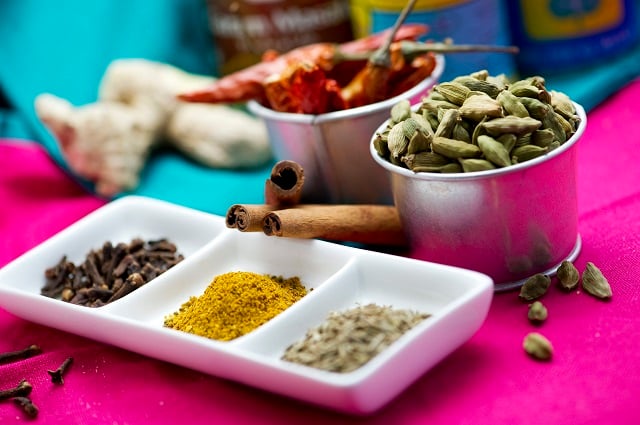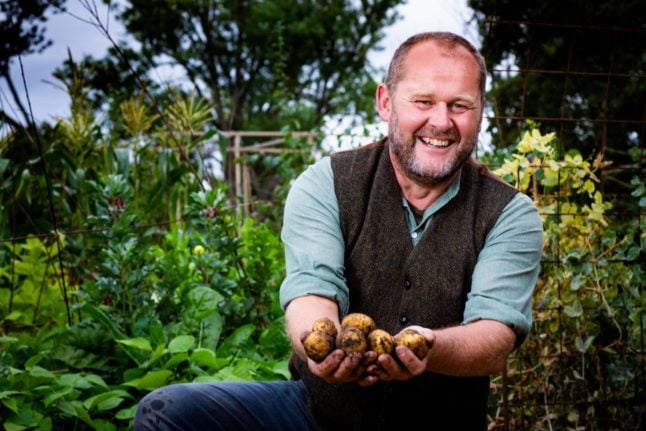In a new series, The Local is looking into the best places to find food, events, and cultural associations from different cultures, to help our readers who are feeling homesick or just looking to try something different.
With plenty of help from our Indian readers, the Facebook groups Indians in Sweden, Indians in Stockholm, the Västerås Indian Swedish Association, and two experts working to promote Indian culture in Sweden, we've gathered together the suggestions of where to find a piece of India in the Nordic nation.
Restaurants
Most people agreed that the offering of Indian food in Sweden had undergone a marked improvement in recent years, but warned against restaurants that catered to Swedish tastebuds with added sugar and fewer spices, as well as many inauthentic restaurants which advertised themselves as Indian to increase their popularity.
In Malmö, many readers recommended The South Indian, which The Local's southern Sweden correspondent has previously reviewed for our Malmö Lunch series. Lunch specials start from just 79 kronor ($8.21), and the restaurant has recently opened a branch in Stockholm.
Other restaurants in Malmö that came recommended were Kontrast, Masala House, Delhi Restaurang, and Golden Shiva.
In Gothenburg, readers recommended Indisk Tikka for takeaway Indian food.
Reader Anukool Korde, based in Västerås, got in touch to share three of his favourite Indian eateries across Sweden, but highlighted that a true Indian experience, with not only authentic food but also the same hospitality as experienced in India, was hard to track down.
As well as The South Indian in Malmö, Korde recommended Stockholm chain Indian Street Food, which was popular among our readers, saying: “The food was delectable, the waiters attentive, and the chef sensitive to our needs.” Extra good news is the fact that the chain recently expanded, opening two restaurants in the capital in addition to its existing food truck and two central restaurants.
LIVING IN SWEDEN ESSENTIALS:
- Members' guide: How to save money despite living in Sweden
- How to set up your first bank account in Sweden
- Sweden Q&A: Ten key questions to help you plan your pension
-
The best tips for a move to Sweden (from people who've been there, done that)
Elsewhere in the capital Stockholm, there were several positive reviews of the South Indian Market. “Feel like we are at South India as the name indicates. Yummy Biriyani, Masala Dosa and super cool South Indian music. Staff speaks South Indian language and Swedish. After eating at Bistro South Indian Market we felt really like we enjoyed a party at our home with friends!” one reader wrote.
Also recommended was Saravanaa Bhavan, an international chain with branches in St Eriksplan as well as Kista north of the centre, which received praise for the wide range of vegetarian options and the lunch buffet in particular.
Indian Grill was another popular choice, with reader Shivani Sapra saying: “Indian Grill serves the best authentic Indian food, the taste is really good, with the proper blend of Indian spices and flavours. The Mango Lassi is the best to have in summer and their halloumi wrap is one of the best.”
Several recommendations were made for Chili Masala in Solna, north of the city centre. Ruth Dolla, who works as India Manager at Visit Sweden promoting links between Sweden and India, named it her second favourite in the capital, with Indian Street Food her first pick.
And two other popular spots in Stockholm are the small chain Shanti, with several locations each with a different focus, and Cumin Club located in Vasastan and Södermalm.
But there are also options outside Sweden's major cities and even in the north.
The Local readers recommended New India in Uppsala, Lotus Kitchen in Älmhult, Indian Dhaba in Arlöv, and Taste of India in Sundsvall.

Inside the kitchen at Shanti. Photo: Henrik Montgomery/TT
Groceries
Despite a booming Indian restaurant scene, cooking authentic meals at home can still pose challenges in Sweden.
“There are hundreds of spices available in India and in different parts of India. Those are not all available here, so the ones which are available are the most common ones,” explained Renjith Ramachandran, who set up the website SearchIndie to showcase Indian businesses and events in Sweden.
“You can have most spices delivered through Indian Post at a good price or bring them back from your yearly trip to India,” he suggested.
Three Stockholm grocery stores that were recommended for their range of Indian ingredients were Kista Grossen, Himlaya Livs, and Taj Mahal Livs, all of which stock beauty products and cosmetics alongside foodstuffs. Gothenburgers have the option of Indian Food House, while Indiska Kryddor specializes in spices and tea, and Indopak in Malmö sells Indian groceries.

The selection of widely available spices is much narrower in Sweden than in India. Photo: Fredrik Sandberg/TT
And to get food delivered to your door, two options are NGroceries and Farm2Home (Stockholm, Linköping and Norrköping only).
Ruth Dolla said that many of the crucial ingredients can be found, with a bit of searching, imported from India.
“Coriander and mint grown in India, where there's more sunlight, have more flavour so it's recommended to buy these from special grocery stores than from an Ica or Coop,” she suggested. “The only thing that is still hard to find is fresh curry leaves; you can find dried curry leaves in the specialty stores or one needs to grow it at home.”
In Swedish supermarkets, she recommended the Santa Maria range of Indian food including ready-made curry sauces and chutneys for something close to the real deal, and noted that Swedish dairy company Arla had started selling paneer (Indian cottage cheese) while the Kung Markatta chain had begun selling Ghee (Indian clarified butter).
READ ALSO:
- WATCH: Could Indo-Nordic food be the next big fusion trend?
- How spices have connected Sweden and India since the Viking Age
- Interview: 'India and Sweden are very different in size, but similar in principles'
However, Dolla recommended heading to specialized stores to track down green chilis and good quality mangoes, although she recommended Stockholm's Hötorget market as an alternative for the fresh fruit.
For those who would like to learn some of the techniques and recipes used in Indian cooking, reader Priyanka got in touch to share her regular Stockholm-based vegetarian cooking meetups, V Cook Desi.
“Since I was missing authentic home-cooked food here, I started experimenting with it and started organizing my own Indian vegetarian home cooking sessions. In fact, I started it after one of my Swedish colleagues suggested that I share my recipes after hosting an Indian cook-along at her place,” she explained.
So far, she has taught the group how to make meals including stuffed aloo, palak paneer, paneer butter masala, and paneer malai kofta, with several more events planned for the summer.
Other businesses
Food is one of the main things many internationals miss from their home country, but is far from the only aspect of life that's different when you move abroad.
The SearchIndie website shows listings and reviews of Indian businesses and events across Sweden, as well as institutions such as temples and mosques.
For eyebrow threading and other beauty treatments, two Indian-run salons are Roopali Beauty Care in Kista and In o bli fin in central Stockholm.
Events and culture
Renjith Ramachandran, who runs the SearchIndie website, says Sweden's three largest cities (Stockholm, Gothenburg, and Malmö) have the largest number of events.
“Namaste Stockholm at Kungsträdgården on May 25th is a must visit, where you can see the entire Indian community in Stockholm and lot of food and ten-hour nonstop programmes,” said Ramachandran.
He also recommended the Huddinge Indian Festival and the Stockholm Sangeet Festival, organized by a group of Swedish people but the only event in Scandinavia to focus on Indian classical music and dance.
One event missing from the calendar is Holi, mainly due to the difficulty of organizing an outdoor festival during the unpredictable Swedish winter.
For more regular activities linked to Indian culture, there are plenty of choices for Indian dance schools in Stockholm, such as Bhangra Fitness, Alen's School of Indian Dances, and Bollywood Dance. And on Bollywood Bio, you can find out about Bollywood movies being shown across Sweden.
Finally, cultural associations such as Indians in Sweden and India Unlimited organize events and offer the chance to attend meetups, while Facebook groups such as Indians in Sweden, Indians in Stockholm, and Indians and Friends in Gothenburg can also be a valuable source of support.
IN DEPTH: How can Stockholm's cultural scene be more open to internationals?
Contribute to future articles in this series! Have you discovered a restaurant, shop, event or group that reminds you of home? Get in touch and tell us where people in Sweden can find the best of your home culture.




 Please whitelist us to continue reading.
Please whitelist us to continue reading.
Member comments